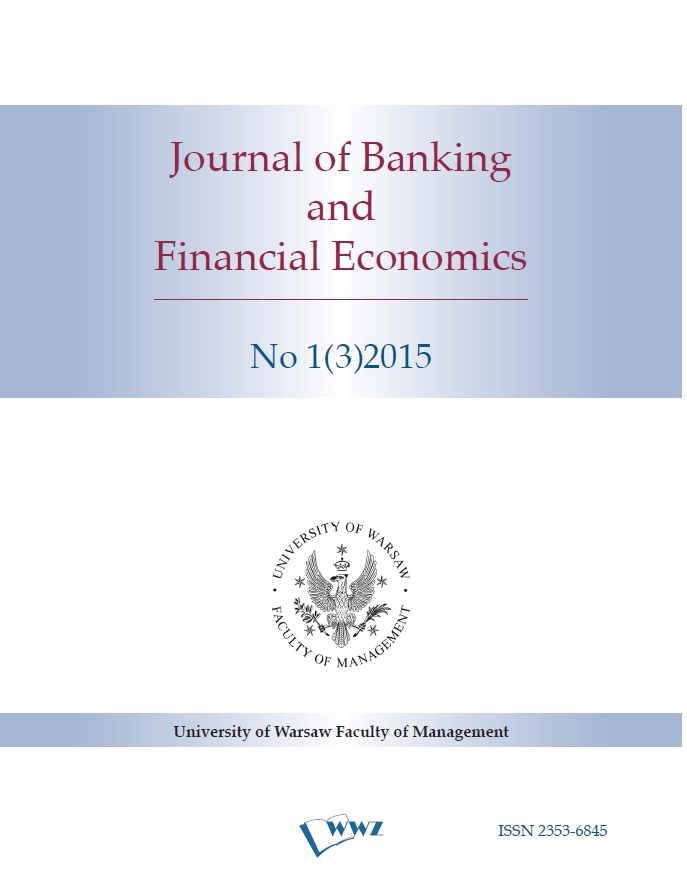The validity and time-horizon of the Fed model for equity valuation: a co-integration approach
The validity and time-horizon of the Fed model for equity valuation: a co-integration approach
Author(s): Fabien MercierSubject(s): Social Sciences, National Economy, Financial Markets
Published by: Wydawnictwo Naukowe Wydziału Zarządzania Uniwersytetu Warszawskiego
Keywords: arbitrage; stock; earning yields; Fed model
Summary/Abstract: Investors do arbitrage between bonds and stocks. The so-called “Fed model” asserts that comparingthe level of the earnings yields of stocks to the nominal government bond yields is relevant whenassessing the relative values of the two asset classes, and their prospective returns. A conceptualproblem with this model is that it compares a real quantity, the earning yield, to a nominal one,the government bond yield, thus implying that economic agents suffer from money-illusion.The merits of the Fed model as an indicator of stock returns is still very controversial. In this article we try to quantify the scope of the Fed model by employing appropriate techniques of co-integration to validate, or invalidate, the Fed model. More precisely, we study the validity of the model geographically and using different frequencies in order to determine its potential time horizon. We obtain the following results. First, the Fed model is very limited in scope and in time: of the 21 pairs of countries and stock exchange indices tested, only three are potential candidates for the Fed model: the US, Italy and Mexico; in the US, the Standard and Poor’s 500 confirms the model, but only from 1980 to 2000. Second, for the Standard and Poor’s 500 from 1980 to 2000 the validity of the Fed model is confirmed, for a time horizon of one week or more for predicting the earning yield on stocks and a time horizon of one month or more for the nominal yield on bonds. Third, from 2000 onwards the long-term relationship between earning yields and nominal bond yields becomes inverted, and the Fed long-term relationship does not help predict any of the two variables compared to a simple vector autoregressive model (VAR). Overall, the evidence for the relevance of a linear long-term relationship between nominal US bonds yields level and the earnings ratio of broad stock indexes appears very weak, even when this relationship is allowed to vary over time, with a structural break somewhere in 2000 with an inversion of the relationship. In most cases, assuming and estimating a possible long-term relationship between earning yields and nominal bond yields does not improve the forecasts as short-term dynamics dominate.
Journal: Journal of Banking and Financial Economics
- Issue Year: 3/2015
- Issue No: 1
- Page Range: 24-49
- Page Count: 19
- Language: English

